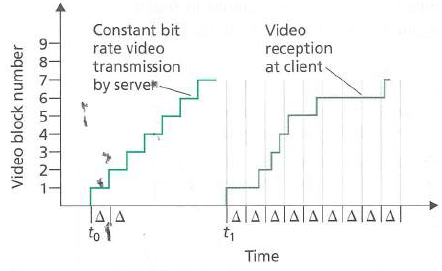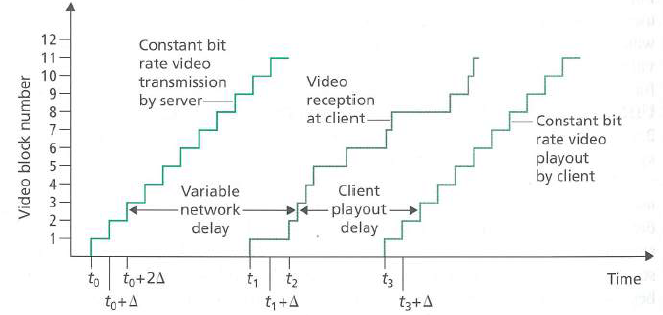Consider the figure below. Similar to our discussion of Figure 9.1. Suppose that video is encoded at
Question:

a. Suppose that the client begins play out as soon as the first block arrives at t1. In the figure below, how many blocks of video (including the first block) will have arrived at the client in time for their play out? Explain how you arrived at your answer.
b. Suppose that the client begins play out now at t1 + ˆ†. How many blocks of video (including the first block) will have arrived at the client in time for their play out? Explain how you arrived at your answer.
c. In the same scenario at (h) above, what is the largest number of blocks that is ever stored in the client buffer, awaiting play out? Explain how you arrived at your answer.
d. What is the smallest play out delay at the client, such that every video block has arrived in time for its play out? Explain how you arrived at your answer.
Figure 9.1

Step by Step Answer:

Computer Networking A Top-Down Approach
ISBN: 978-0133594140
7th edition
Authors: James Kurose, Keith Ross





